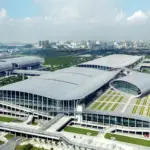The combination of many factors has caused container freight rates to reach record highs in 2024, putting significant pressure on businesses and consumers who depend on global trade.
Experts anticipate that these high transportation costs could persist for the foreseeable future unless there are major improvements in supply chain resilience, especially in transportation from China to Latin America.
Supply chain disruptions continue: The lingering effects of the COVID-19 pandemic, combined with ongoing geopolitical tensions, have continued to disrupt global supply chains.
This has led to bottlenecks at major ports and shipping hubs, reducing overall capacity and increasing transportation costs.
Fuel price increase: The price of bunker fuel, which powers containerships, has risen sharply in 2024 due to a combination of factors, including the conflict between Russia and Ukraine and current OPEC production decisions.
These fuel cost increases are being passed on to shipping lines and consumers.
Equipment shortage: There is a continuing shortage of containers and ships, as manufacturing has struggled to keep up with demand.
This shortage allows shipping lines to charge higher rates.
Increased labor costs: Many ports and logistics providers have had to raise wages to attract and retain workers, which contributes to higher overhead costs that are reflected in freight rates.
Continued strong international shipping demand from China: Despite some economic headwinds, global trade volumes remain high compared to pre-pandemic levels.
This high demand allows shipping lines to demand higher prices.
However, your company can implement several strategies to try to mitigate the impact of the 2024 container freight rate increase:
- Diversify suppliers and logistics providers
- Optimizing inventory and supply chain processes
- Renegotiate transportation contracts
- Explore alternative modes of transportation
- Investing in supply chain technologies






